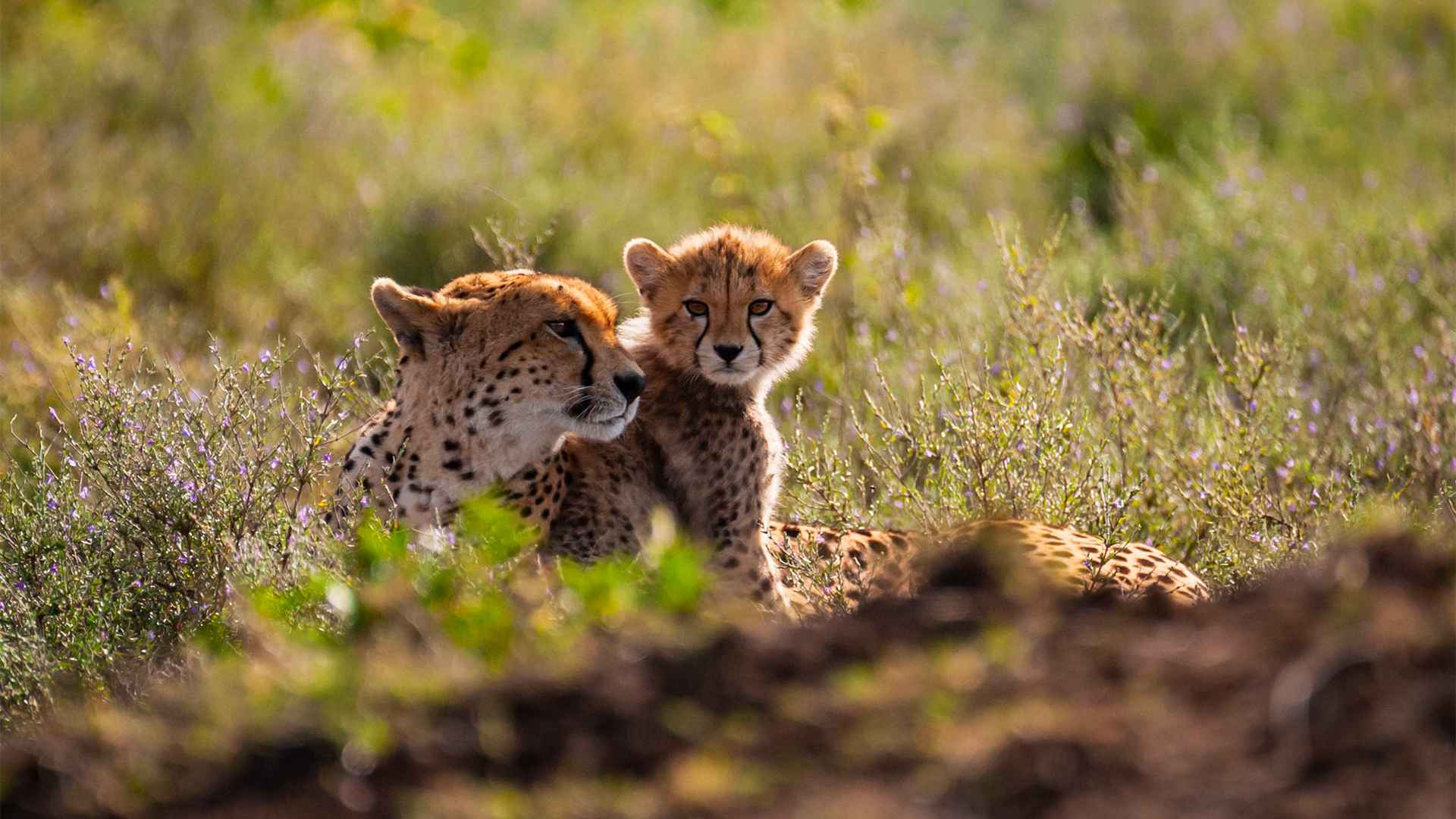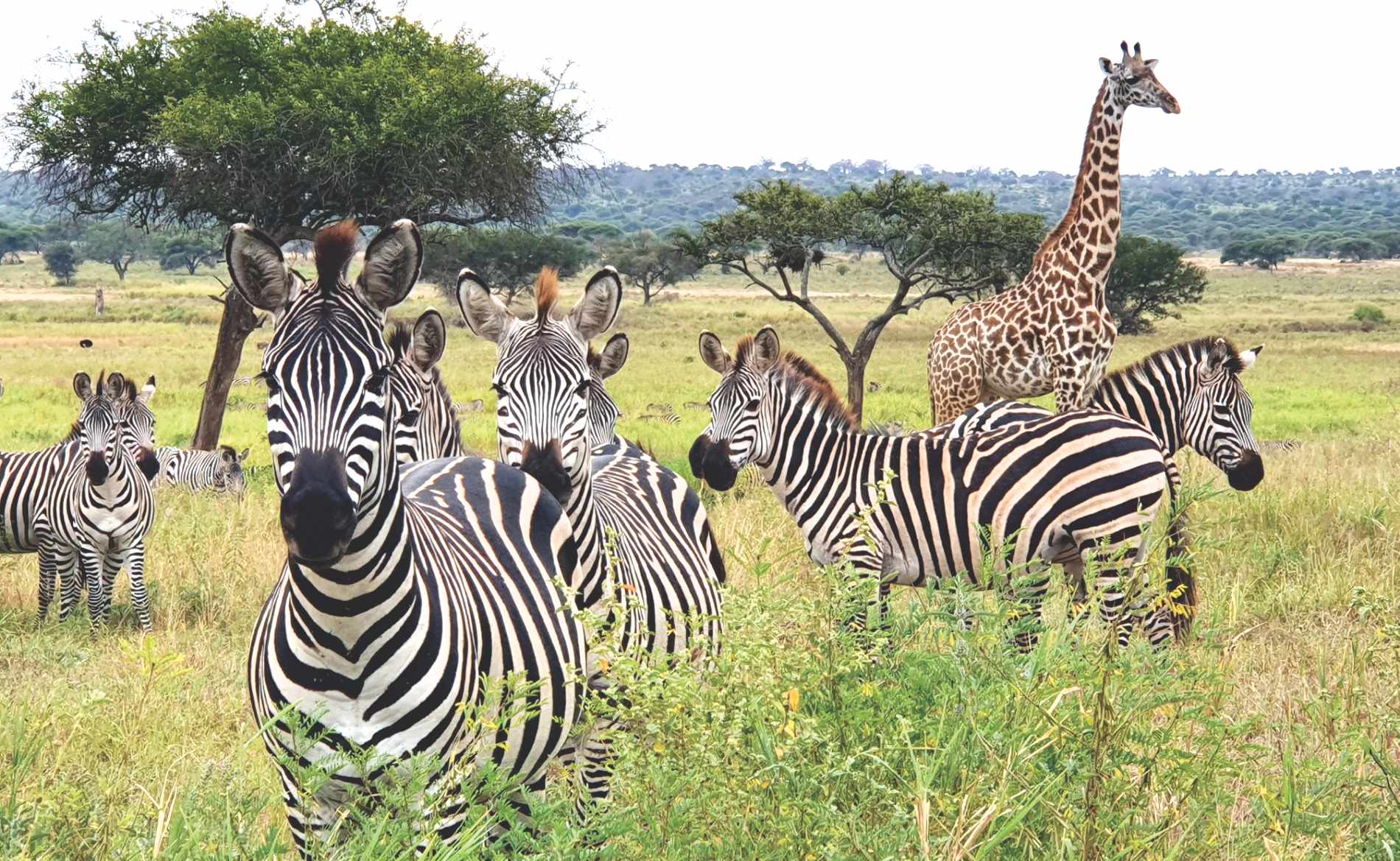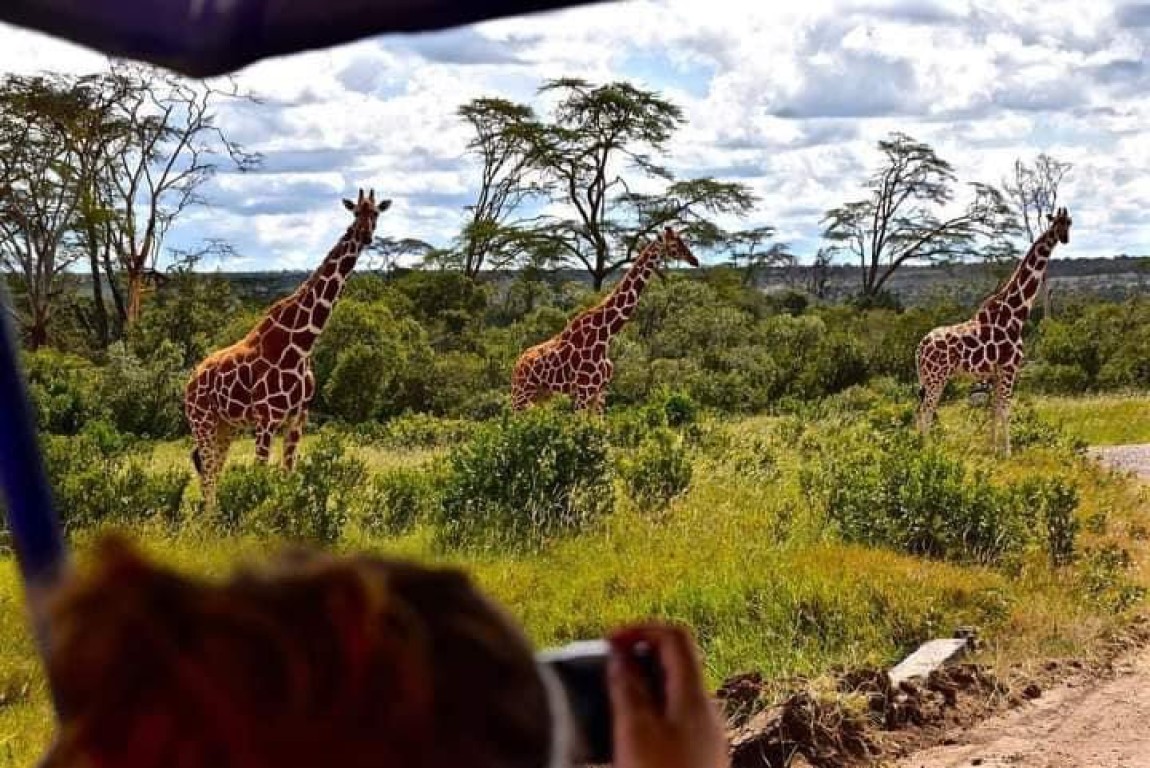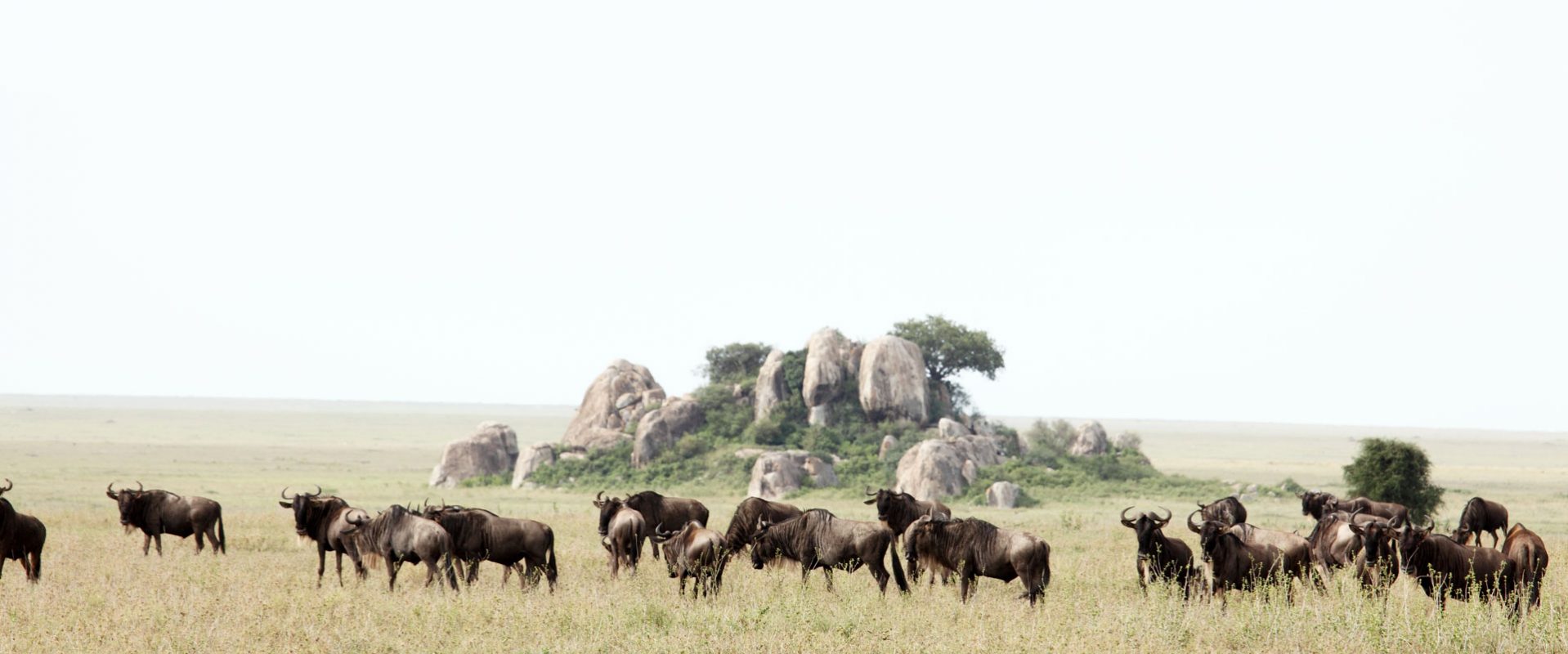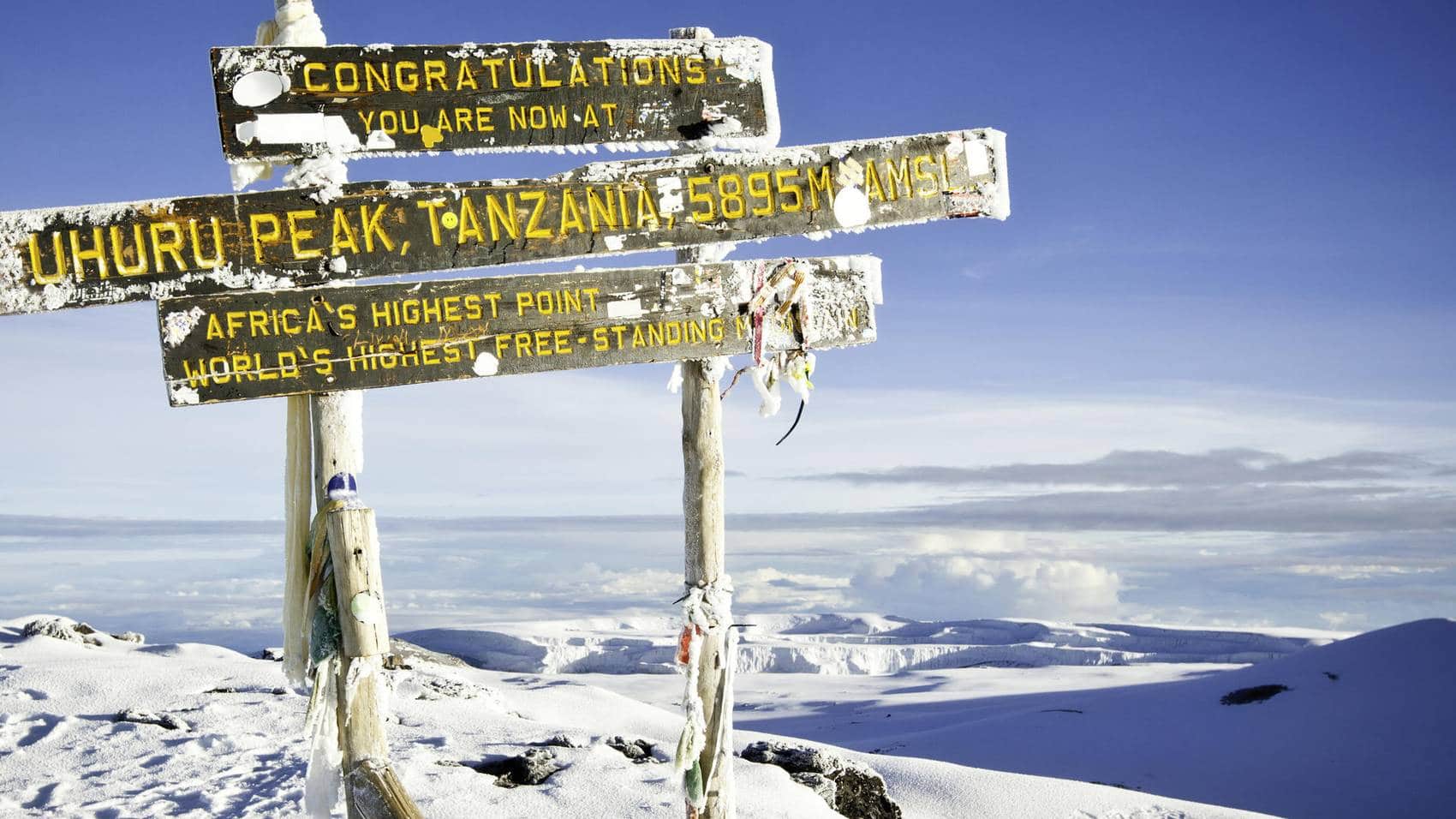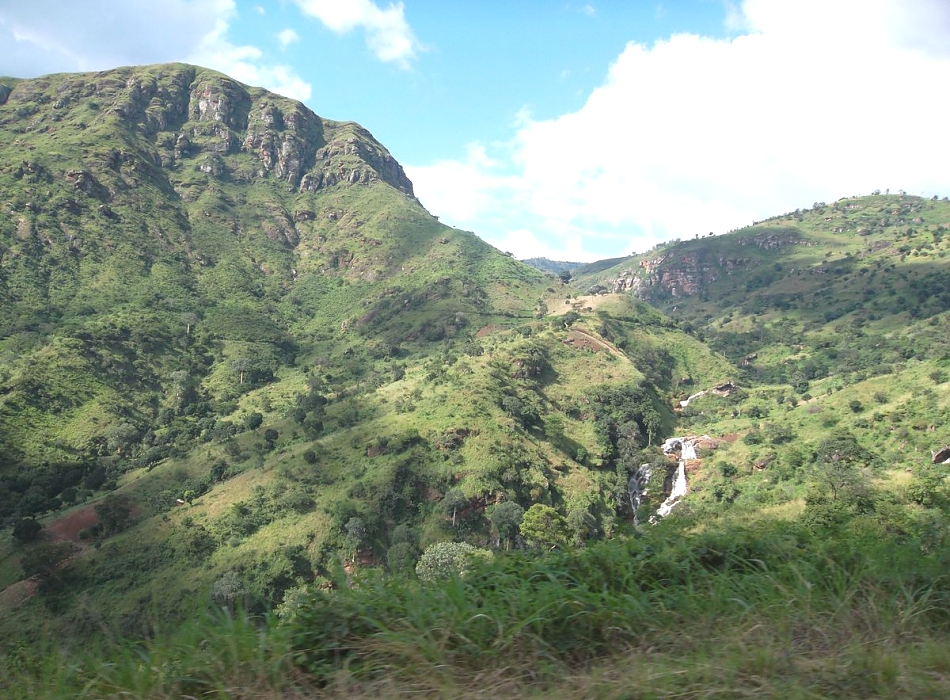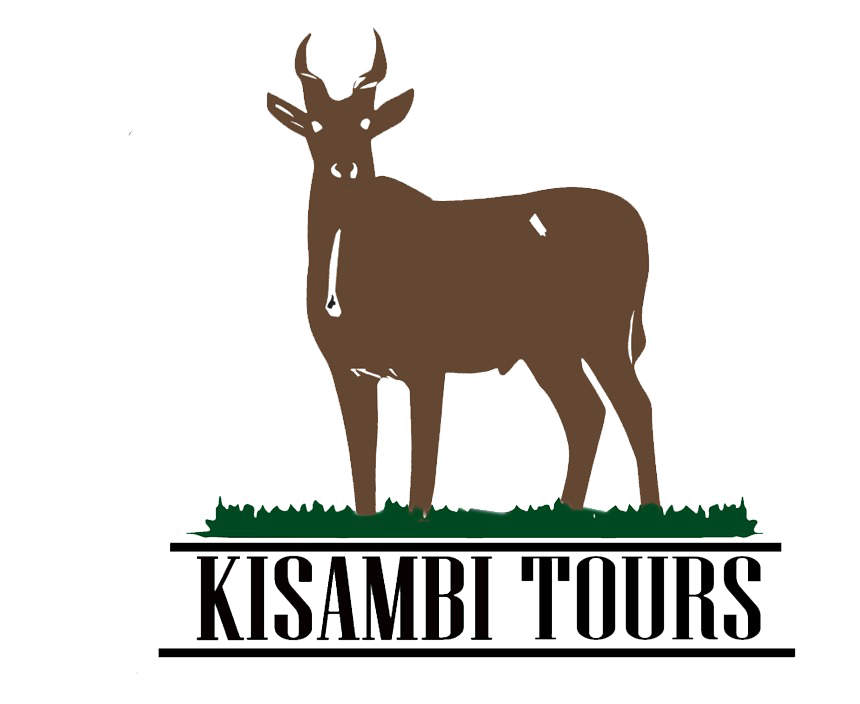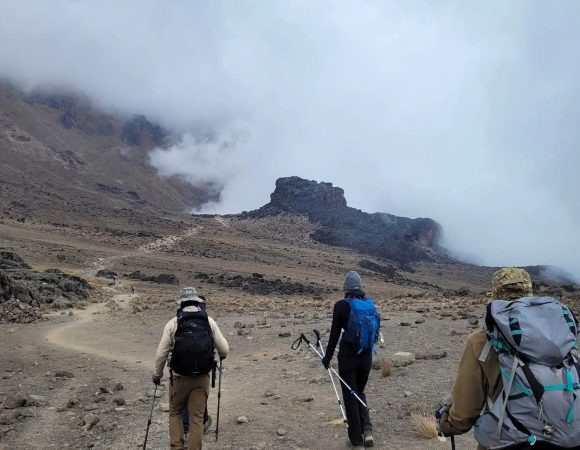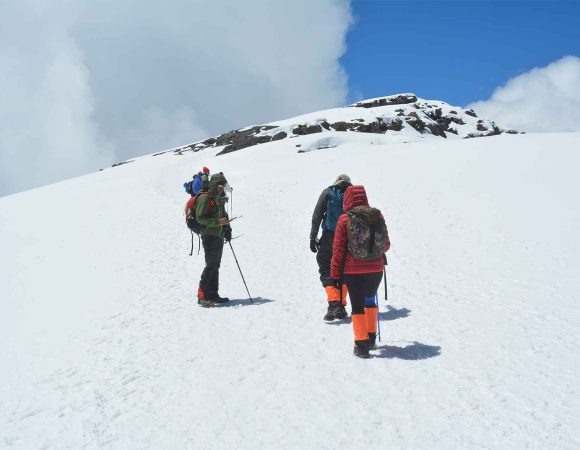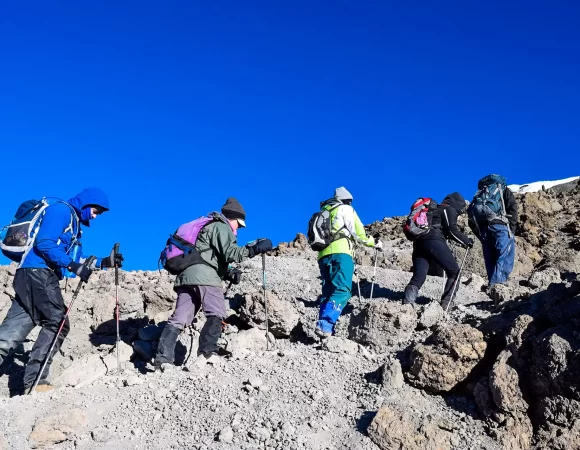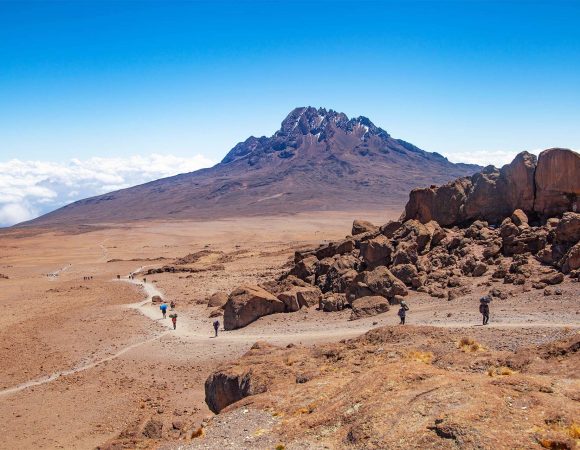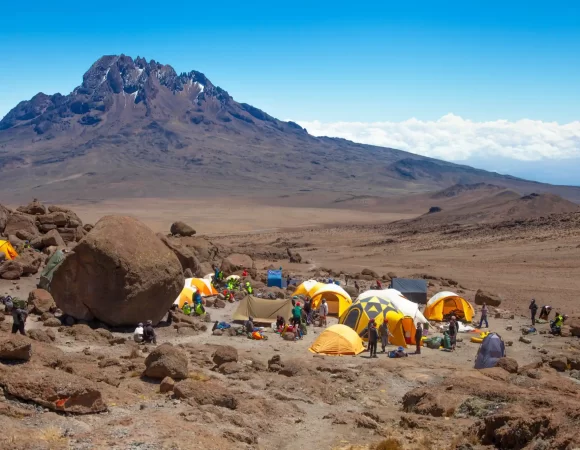6 Days Kilimanjaro Climb Via Marangu Route
Tour overview
The “easiest” route up Kilimanjaro. The Marangu Route (also known as the “Coca-Cola” route) is one of the most popular routes up Kilimanjaro. Its well-developed paths and gentle ascent (with the exception of the summit day itself) make this route popular with less experienced mountain hikers. The accommodation is located in simple, but wind sheltered mountain huts. This offers a certain advantage, since it can be quite cold in the higher altitudes on the mountain. The ascent and descent takes place in the same way.
We recommend the Marangu route as a 6 day tour with an additional acclimatization day at the Horombo Hut. This acclimatization day significantly increases the chance of a summit success.
Tour Type
Duration
Tour Location
Airport Pickup
- Kilimanjaro Int. Airport (KIA)
Tour Highlights
- The only route with accommodation in huts
- Ascent and descent takes place on the same route
- Gentle ascent on well-developed path, few steeper sections
- good acclimatization possible (as 6 days tour)
- Total distance about 73 km (as 6 day tour)
Tour Itinerary
- Elevation: 1,970m to 2,720m
- Hiking Time: 4-5 hours
- Distance: Not specified
- Difficulty: Easy to moderate
- Habitat: Rainforest
- Elevation: (2,700m) to (3,720m)
- Hiking Time: 6-8 hours
- Distance: Not specified
- Difficulty: Moderate
- Habitat: Montane forest transitioning to moorland
- Elevation: Horombo Huts (3,720m)
- Hiking Time: 4-5 hours roundtrip
- Distance: Not specified
- Difficulty: Easy
- Habitat: Alpine desert
- Elevation: (3,720m) to (4,720m)
- Hiking Time: Not specified
- Distance: Not specified
- Difficulty: Moderate to strenuous
- Habitat: Heathland and alpine desert
- Elevation: Kibo Huts (4,720m) to Uhuru Peak (5,895m) to Horombo Huts (3,720m)
- Hiking Time: 6-7 hours ascent, 7-8 hours descent
- Distance: Not specified
- Difficulty: Very strenuous
- Habitat: Glacial zone
- Elevation: (3,720m) to (1,830m/6,000ft)
- Hiking Time: 5-6 hours
- Distance: Not specified
- Difficulty: Easy
- Habitat: Rainforest
Includes
- Kilimanjaro trekking according to the itinerary
- Professional, English-speaking guide
- Mountain crew (cook, summit porter& porters)
- Overnight stays in tents
- Camping equipment (tents, sleeping mats, tables, chairs)
- Meals according to the itinerary
- Drinking water, tea & coffee
- Oxygen tank and oximeters
- All national park fees
- Transfer from the hotel to the National Park gate and back
Excludes
- Alcohol and soft drinks
- Sleeping bag
- Flights
- Visa fees
- Tips
- Personal spending money for souvenirs
- Travel insurance
- Airport Transfer
- Pre and Post climb Hotel Accommodation
Gallery
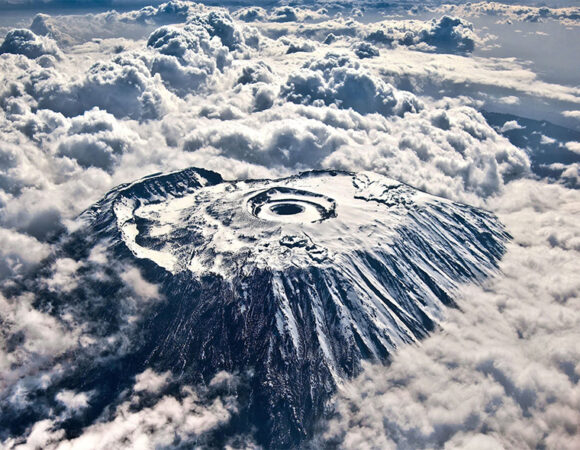
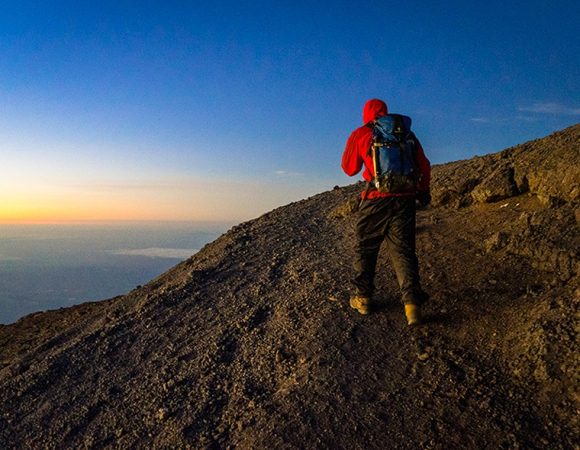
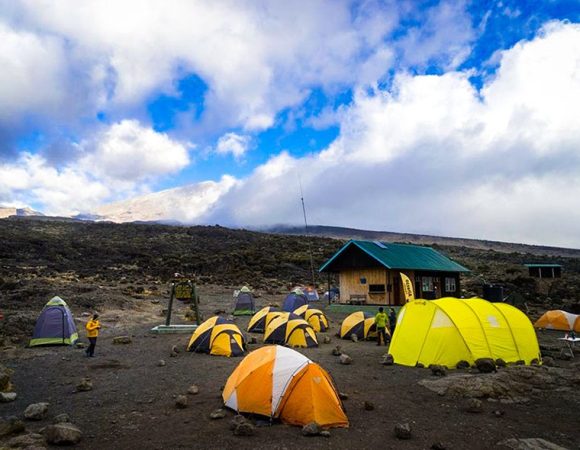
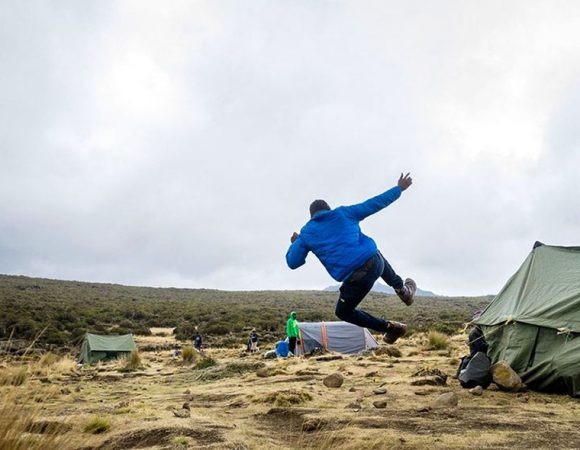
GROUP DISCOUNT
Group adventures have a predetermined charge per person based on group size. However, we offer optional options for specific private and tailor-made preferences that are best suited to you, your family, and friends.
| GROUP SIZE | PRICE PER PERSON |
|---|---|
| 1 Pax | $ 1850 |
| 2 Pax | $ 1640 |
| 3 Pax - 4 Pax | $ 1580 |
| 5 Pax - 6 Pax | $ 1480 |
| 7 Pax | $ 1460 |
THE MOSTLY FREQUENTLY ASKED QUESTIONS
Best time to climb Kilimanjaro is a major Kilimanjaro Faq’s asked by most of the trekkers. Mount Kilimanjaro can be ascended year around and all the Kilimanjaro routes will support climbing Kilimanjaro round the year. As Kilimanjaro is near to equator the region experiences a very less extremes of winter and summer weather, rather it has wet and dry seasons. Hence, the Best Time To Climb Kilimanjaro is dry season which is warm. It is advised to avoid climbing Kilimanjaro during wet season for beginners. However, if you are with a professional climber and have all the safety precautions taken, then climbing Kilimanjaro in wet season would be really adventures. This also depends on your preference of Kilimanjaro Routes. You will need to choose best Kilimanjaro route and also choose a longer itinerary for better acclimatization.
The weather in Kilimanjaro is considered as wet season and dry season. Before knowing about Best Time To Climb Kilimanjaro”, the weathers and climates are very important to decide for Climbing Mount Kilimanjaro. All the Kilimanjaro routes pass the ecological or climatic zones where the weather tends to change hourly due to the high-altitude condition and the trade winds. The wet season has more rainfall and dry season has lesser rainfall with more dry days. The main climatic zones are: Cultivation zone, Rainforest zone, Heath or moorland zone, Highland dessert zone and Artic zone. Each zone are unique in its own way and also have a distinct weather conditions all the way.
The Kilimanjaro Food during your climb will help you to avoid from Kilimanjaro Altitude Sickness. The menu on Kilimanjaro is designed to ensure your food intake matches your level of exertion. It will provide you with a good balance of protein, carbohydrates, fruit and vegetables. When you are at altitude you could start to feel uneasy and your appetite may be suppressed, so the meals prepared at high altitude usually contain more carbohydrates and less protein to help you to digest your food. Your meals will be prepared by your cooks on Kilimanjaro and the food will be carried by your porters. You will be provided with Porridge, Toast, Pancakes, Egg, Smoked sausages, Tea, coffee and Hot chocolate. Sandwiches, Hard boiled eggs, Biscuits, Fruit juice. Soup, Pasts, Rice, Potatoes, Chicken, Beef, vegetables, Salad and Fresh fruits.
The Kilimanjaro Food during your climb will help you to avoid from Kilimanjaro Altitude Sickness. The menu on Kilimanjaro is designed to ensure your food intake matches your level of exertion. It will provide you with a good balance of protein, carbohydrates, fruit and vegetables. When you are at altitude you could start to feel uneasy and your appetite may be suppressed, so the meals prepared at high altitude usually contain more carbohydrates and less protein to help you to digest your food. Your meals will be prepared by your cooks on Kilimanjaro and the food will be carried by your porters. You will be provided with Porridge, Toast, Pancakes, Egg, Smoked sausages, Tea, coffee and Hot chocolate. Sandwiches, Hard boiled eggs, Biscuits, Fruit juice. Soup, Pasts, Rice, Potatoes, Chicken, Beef, vegetables, Salad and Fresh fruits.
It is better to check with your doctor or centre of disease control before leaving for any recommendations. This one of the major Mount Kilimanjaro Facts you should take into considerations. However, while entering Tanzania you will need a yellow fever vaccination certificate and also malaria vaccination certificate. Apart from these other vaccinations are not compulsory. However, it is better to consult your doctor for Vaccinations for Kilimanjaro if you have asthma or any chronic health problems.
The usual ratio is three or four local staff for each climber, although small groups may have four or five staff per climber. The staff usually consists of an English speaking guide or guides, a professional cooker, and gear-carrying porters. We encourage you to interact with your staff. They are all trustworthy, local people who have grown up in the shadow of the mountain. Many of them have climbed the peak a hundred or more times.
We can measure each day in walking hours rather than kilometers. Most days, other than the summit day, will begin with breakfast around 6:30 AM and departure at 7 AM. You will walk four to five hours with a break for lunch followed by another hour or two of hiking in the afternoon. These days are not long or difficult and you will be advised to walk slowly.
We recommend a minimum of eight days from the USA and Europe, although some people may wish more time for the trip. We can customize itineraries or routes to offer more days in the park(s). Some people may wish to climb nearby Mount Meru as well. If you have more than eight or nine days, you can choose any of the main routes on the mountain and still have time for a wildlife safari before or after your trip.
Words from Our happy Clients
We have received feedback from our clients, and Kisambi Tours is rated 5/5 by them. Customers grant us this honor because we are constantly committed to doing whatever it takes to ensure that their safari is completely satisfactory.
Verified Fahreen B2023-11-24Serenity experience Excellent service provided, staff were prompt, friendly and knowledgeable. Food provided was good. I’d recommend their service anytime!Verified
Fahreen B2023-11-24Serenity experience Excellent service provided, staff were prompt, friendly and knowledgeable. Food provided was good. I’d recommend their service anytime!Verified Julia S2023-11-22Extraordinary flexible and friendly We climbed Kilimanjaro thanks to Kizambi tours and it was a wonderful experience. The team was very nice, flexible and there for our needs and wishes. For example we decided to go up one day earlyer than planned and it was no problem even though decided quite spontaneously! We had quite a few changes like this in our plans and it was never a problem, the team adapted very well ("hakuna Matata"). So, the communication was very good and not complicated. When we had questions we could always ask our "manager" and he responded us very quickly. I felt safe and in good hands though we also had enough freedom to explore and do things by ourselves. Thanks for these beautiful holidays!Verified
Julia S2023-11-22Extraordinary flexible and friendly We climbed Kilimanjaro thanks to Kizambi tours and it was a wonderful experience. The team was very nice, flexible and there for our needs and wishes. For example we decided to go up one day earlyer than planned and it was no problem even though decided quite spontaneously! We had quite a few changes like this in our plans and it was never a problem, the team adapted very well ("hakuna Matata"). So, the communication was very good and not complicated. When we had questions we could always ask our "manager" and he responded us very quickly. I felt safe and in good hands though we also had enough freedom to explore and do things by ourselves. Thanks for these beautiful holidays!Verified Stefano P2023-11-09Four Parks in Six days We visited four National Parks and could see the Big Five thanks the professional skills of our guides. Very satisfactory tour!Verified
Stefano P2023-11-09Four Parks in Six days We visited four National Parks and could see the Big Five thanks the professional skills of our guides. Very satisfactory tour!Verified Ronald R2023-10-23Priceless memories once in a life time trip Exellent guys as in the office and the full time guide who did guide us in all the tours we did who were made to what we all wanted to visit. Exellent ,fair price and quality. Maturni homes was a beathifull stay in accomodation, very friendly big family who looked after us... Hashim, our full time guide, was there for us once we get up in the morning untill bedtime...they did a lot of efford to change and add things in tours what we wanted to do and see in the 4 days we were there. All there drivers are also helpfull and friendly. A+++++, absolutely recommended Thank you guys....Verified
Ronald R2023-10-23Priceless memories once in a life time trip Exellent guys as in the office and the full time guide who did guide us in all the tours we did who were made to what we all wanted to visit. Exellent ,fair price and quality. Maturni homes was a beathifull stay in accomodation, very friendly big family who looked after us... Hashim, our full time guide, was there for us once we get up in the morning untill bedtime...they did a lot of efford to change and add things in tours what we wanted to do and see in the 4 days we were there. All there drivers are also helpfull and friendly. A+++++, absolutely recommended Thank you guys....Verified Keith M2023-10-19Waterfall & Hot Spring! First class trip. Let's you visit both on the same day if time is tight. Emanuel & Julius were fantastic! 👍Verified
Keith M2023-10-19Waterfall & Hot Spring! First class trip. Let's you visit both on the same day if time is tight. Emanuel & Julius were fantastic! 👍Verified Tara2023-10-12Great tour! Had an amazing day trip with Mercy and Charlie! Mercy led us on a great trek to the waterfall and then to the coffee bean farm where we got to take part in the local coffee making process! Then onto the fabulous hot springs! Food was great throughout the day! Would recommend this trip, especially Mercy and Charlie!Verified
Tara2023-10-12Great tour! Had an amazing day trip with Mercy and Charlie! Mercy led us on a great trek to the waterfall and then to the coffee bean farm where we got to take part in the local coffee making process! Then onto the fabulous hot springs! Food was great throughout the day! Would recommend this trip, especially Mercy and Charlie!Verified Bente B2023-09-25Climbing the Kilimanjaro with a wonderful, reliable and fun crew! An amazing experience that I would recommend everyone! We highly recommend this organization for any excursion offered. With a high reliability and clear instructions we together checked our gear and did a briefing on how the 7 day trek would look like. After six intense but rewarding days, the team helped us achieve our long-time dream of climbing the Kilimanjaro. We were humbled by the kindness and professionalism of our 10-man crew. Our two guides made it their sole purpose to get us to the roof of Africa and summit with succes. Throughout this amazing experience we were surprised during every meal about the wonderful food that the team prepared for us. Good nutrition is key for such a challenging experience and we were grateful that this was really handled well. We would definitely make use of this organization again upon another visit of Tanzania.Verified
Bente B2023-09-25Climbing the Kilimanjaro with a wonderful, reliable and fun crew! An amazing experience that I would recommend everyone! We highly recommend this organization for any excursion offered. With a high reliability and clear instructions we together checked our gear and did a briefing on how the 7 day trek would look like. After six intense but rewarding days, the team helped us achieve our long-time dream of climbing the Kilimanjaro. We were humbled by the kindness and professionalism of our 10-man crew. Our two guides made it their sole purpose to get us to the roof of Africa and summit with succes. Throughout this amazing experience we were surprised during every meal about the wonderful food that the team prepared for us. Good nutrition is key for such a challenging experience and we were grateful that this was really handled well. We would definitely make use of this organization again upon another visit of Tanzania.Verified Elisa S2023-09-16Best experience ever My partner and I stayed with Kisambi tour for a 6 days experience. Elisante organized everything for us, and even before the trip was always precise and fast in replying to our questions via messages. The tour included: the first day visiting Materuni waterfall and a coffee preparation experience accompanied by traditional songs and dances. The following day we went to hot spring and visiting a Masai Village. After this, we met out amazing guide Godlove and we started our 4 days safari. We visited Tarangire national park , Serengeti and Ngorogoro crater. It was without doubts, one of the best experiences of our lives. During the safari, we spent nights in campsites and we had a personal cook with us, Idd, who made the trip even better cooking traditional foods every day. We highly recommend travelling with Kisambi tour!Verified
Elisa S2023-09-16Best experience ever My partner and I stayed with Kisambi tour for a 6 days experience. Elisante organized everything for us, and even before the trip was always precise and fast in replying to our questions via messages. The tour included: the first day visiting Materuni waterfall and a coffee preparation experience accompanied by traditional songs and dances. The following day we went to hot spring and visiting a Masai Village. After this, we met out amazing guide Godlove and we started our 4 days safari. We visited Tarangire national park , Serengeti and Ngorogoro crater. It was without doubts, one of the best experiences of our lives. During the safari, we spent nights in campsites and we had a personal cook with us, Idd, who made the trip even better cooking traditional foods every day. We highly recommend travelling with Kisambi tour!Verified Susan K2023-09-14Amazing Waterfall and Coffee Roasting Experience Great, moderate hike to the stunning Materuni Falls. Along the way, our guide Godwin told us so much about the history of the area, and the local flowers, fruit, and birds. He was so knowledgeable! After seeing the waterfall, which was incredible, we hiked back to a local Chogga village and had a delicious lunch of banana soup, rice, beans and spiced vegetables. Then, we learned all about coffee cultivation and roasting, and had the most delicious cup of coffee. So much fun and so educational. It was a highlight of our trip to Tanzania,Verified
Susan K2023-09-14Amazing Waterfall and Coffee Roasting Experience Great, moderate hike to the stunning Materuni Falls. Along the way, our guide Godwin told us so much about the history of the area, and the local flowers, fruit, and birds. He was so knowledgeable! After seeing the waterfall, which was incredible, we hiked back to a local Chogga village and had a delicious lunch of banana soup, rice, beans and spiced vegetables. Then, we learned all about coffee cultivation and roasting, and had the most delicious cup of coffee. So much fun and so educational. It was a highlight of our trip to Tanzania,Verified Katerina K2023-09-09Best company to visit Moshi! Great company to visit Tanzania and go around Arousha and Moshi. Elisante is very available, friendly and kind! First, we had a wonderful safari, with a very kind and prepared driver, Joseph, always on-time! The last day they even offered us a middle day trip, before going to the airport, with another fantastic, joyful driver, Julius! They are the best!Tripadvisor rating score: 5.0 of 5, based on 336 reviews
Katerina K2023-09-09Best company to visit Moshi! Great company to visit Tanzania and go around Arousha and Moshi. Elisante is very available, friendly and kind! First, we had a wonderful safari, with a very kind and prepared driver, Joseph, always on-time! The last day they even offered us a middle day trip, before going to the airport, with another fantastic, joyful driver, Julius! They are the best!Tripadvisor rating score: 5.0 of 5, based on 336 reviews
Related Tours
will serve as a starting point, keep in mind that your path will be entirely unique to you.
- Quality4.67
- Location5
- Amenities4.33
- Services5
- Price4
5 Days Kilimanjaro Climb Via Marangu Route
- Quality4.67
- Location5
- Amenities4.33
- Services5
- Price4
8 Days Kilimanjaro Climb Lemosho Route
- Quality4.67
- Location5
- Amenities4.33
- Services5
- Price4
7 Days Kilimanjaro Climb Machame Route
- Quality4.67
- Location5
- Amenities4.33
- Services5
- Price4
6 Days Kilimanjaro climbing Rongai Route
- Quality4.67
- Location5
- Amenities4.33
- Services5
- Price4
9 Days Kilimanjaro Climb Northern Circuit Route
- Quality4.67
- Location5
- Amenities4.33
- Services5
- Price4
7 Days Kilimanjaro Climbing Rongai Route
- Quality4.67
- Location5
- Amenities4.33
- Services5
- Price4
7 Days Kilimanjaro Climbing Umbwe Route
- Quality4.67
- Location5
- Amenities4.33
- Services5
- Price4



